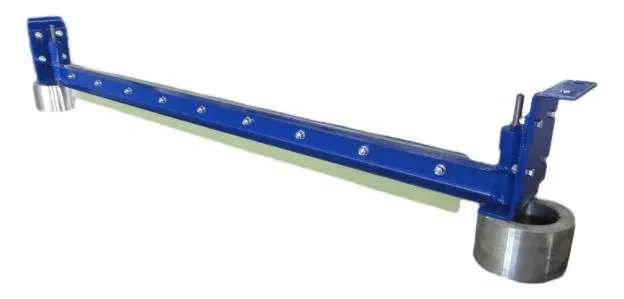 Afrikaans
Afrikaans  Albanian
Albanian  Amharic
Amharic  Arabic
Arabic  Armenian
Armenian  Azerbaijani
Azerbaijani  Basque
Basque  Belarusian
Belarusian  Bengali
Bengali  Bosnian
Bosnian  Bulgarian
Bulgarian  Catalan
Catalan  Cebuano
Cebuano  Corsican
Corsican  Croatian
Croatian  Czech
Czech  Danish
Danish  Dutch
Dutch  English
English  Esperanto
Esperanto  Estonian
Estonian  Finnish
Finnish  French
French  Frisian
Frisian  Galician
Galician  Georgian
Georgian  German
German  Greek
Greek  Gujarati
Gujarati  Haitian Creole
Haitian Creole  hausa
hausa  hawaiian
hawaiian  Hebrew
Hebrew  Hindi
Hindi  Miao
Miao  Hungarian
Hungarian  Icelandic
Icelandic  igbo
igbo  Indonesian
Indonesian  irish
irish  Italian
Italian  Japanese
Japanese  Javanese
Javanese  Kannada
Kannada  kazakh
kazakh  Khmer
Khmer  Rwandese
Rwandese  Korean
Korean  Kurdish
Kurdish  Kyrgyz
Kyrgyz  Lao
Lao  Latin
Latin  Latvian
Latvian  Lithuanian
Lithuanian  Luxembourgish
Luxembourgish  Macedonian
Macedonian  Malgashi
Malgashi  Malay
Malay  Malayalam
Malayalam  Maltese
Maltese  Maori
Maori  Marathi
Marathi  Mongolian
Mongolian  Myanmar
Myanmar  Nepali
Nepali  Norwegian
Norwegian  Norwegian
Norwegian  Occitan
Occitan  Pashto
Pashto  Persian
Persian  Polish
Polish  Portuguese
Portuguese  Punjabi
Punjabi  Romanian
Romanian  Russian
Russian  Samoan
Samoan  Scottish Gaelic
Scottish Gaelic  Serbian
Serbian  Sesotho
Sesotho  Shona
Shona  Sindhi
Sindhi  Sinhala
Sinhala  Slovak
Slovak  Slovenian
Slovenian  Somali
Somali  Spanish
Spanish  Sundanese
Sundanese  Swahili
Swahili  Swedish
Swedish  Tagalog
Tagalog  Tajik
Tajik  Tamil
Tamil  Tatar
Tatar  Telugu
Telugu  Thai
Thai  Turkish
Turkish  Turkmen
Turkmen  Ukrainian
Ukrainian  Urdu
Urdu  Uighur
Uighur  Uzbek
Uzbek  Vietnamese
Vietnamese  Welsh
Welsh  Bantu
Bantu  Yiddish
Yiddish  Yoruba
Yoruba  Zulu
Zulu return pulley
Understanding Return Pulleys Mechanics and Applications
Return pulleys are essential components in various mechanical systems, playing a crucial role in guiding and redirecting cables or belts. Often used in applications ranging from elevators to conveyor systems, return pulleys enhance the efficiency and functionality of numerous mechanical frameworks.
At its core, a return pulley is designed to change the direction of tension in a cable or belt. This redirection is crucial for ensuring that the system operates smoothly and efficiently. When a cable or belt moves through a mechanism, maintaining proper alignment and direction is vital to prevent wear and tear, which can lead to costly maintenance and downtime.
One of the most common applications of return pulleys is in elevators. In these systems, return pulleys help manage the cables that lift and lower the elevator car. By redirecting the cables, the pulleys ensure that the elevator operates safely and efficiently, providing a smooth ride for passengers. The return pulley allows the cable to loop back, creating a seamless path that reduces friction and minimizes energy loss.
return pulley

In conveyor systems, return pulleys serve a similar purpose. They facilitate the continuous movement of materials by guiding the conveyor belt back to its starting position after it has deposited its load. This not only maintains the cycle of material transport but also extends the life of the belt by preventing it from sagging or becoming misaligned. The efficient operation of return pulleys in these systems is integral to maintaining productivity in industrial settings.
Return pulleys also play a significant role in the functioning of various machines, such as winches and cranes. In winching applications, they help manage the cable that pulls heavy loads, ensuring that the cable remains taut and aligned during operation. Similarly, in cranes, return pulleys contribute to the smooth movement of lifting cables, allowing for precise handling of loads in construction sites and warehouses.
The design of return pulleys varies depending on their application. They can be constructed from various materials, including metal and plastic, and are available in different sizes and shapes to accommodate specific requirements. The choice of material and design influences the pulley’s durability, load capacity, and overall efficiency. Proper selection and installation of return pulleys are critical to the operational success of the systems they are utilized in.
In conclusion, return pulleys are vital components in many mechanical systems, ensuring the smooth operation and longevity of equipment involving cables and belts. Their applications in elevators, conveyor systems, and various machines underscore their importance in engineering and industrial design. Understanding the mechanics and function of return pulleys enhances our appreciation for the intricate systems that power our everyday technologies, contributing to advancements in efficiency and safety across multiple sectors.
-
Revolutionizing Conveyor Reliability with Advanced Rubber Lagging PulleysNewsJul.22,2025
-
Powering Precision and Durability with Expert Manufacturers of Conveyor ComponentsNewsJul.22,2025
-
Optimizing Conveyor Systems with Advanced Conveyor AccessoriesNewsJul.22,2025
-
Maximize Conveyor Efficiency with Quality Conveyor Idler PulleysNewsJul.22,2025
-
Future-Proof Your Conveyor System with High-Performance Polyurethane RollerNewsJul.22,2025
-
Driving Efficiency Forward with Quality Idlers and RollersNewsJul.22,2025





























